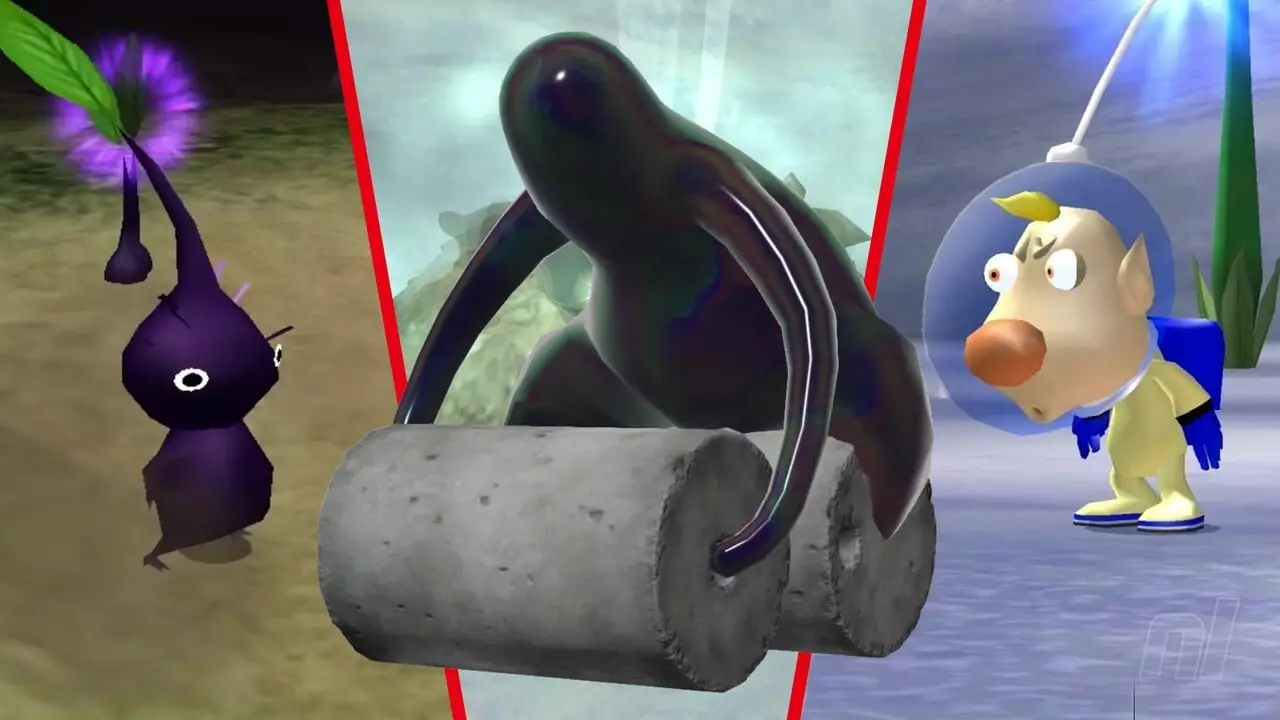At first glance, the Pikmin franchise may seem like a harmless and cheerful series, designed to captivate children and nostalgic adults alike. Its vibrant landscapes are filled with endearing creatures, creating an atmosphere that invites players into a whimsical world. However, beneath this innocent exterior lies a sinister undercurrent that reveals what makes Pikmin such an extraordinary experience. As we celebrate the 20th anniversary of Pikmin 2—a title that originally graced the Nintendo GameCube in Japan—we must sift through the layers of charm to uncover the spine-chilling horrors that lurk in its gameplay.
When players embark on their journey into Pikmin 2, they are met with vibrant visuals and charming gameplay mechanics that might evoke memories of a leisurely garden adventure. Yet, those who have delved deeper into the game quickly discover that this is not just a game of gathering cute little aliens to assist you against challenging enemies. Instead, it becomes a test of survival, resource management, and gut-wrenching anxiety. The game thrusts players into perilous situations that can lead to the demise of their beloved Pikmin companions in a multitude of harrowing ways: drowning, crushing, and, in one particularly notorious instance, the dreaded Waterwraith.
Facing the Waterwraith: A True Horror
The Waterwraith, the horrifying antagonist that manifests in the depths of the Submerged Castle, stands as a prime illustration of how quickly a seemingly innocent game can become a source of nightmares. Many players, unaware of the ticking time bomb that accompanies each cave level, find themselves at the mercy of this gelatinous fiend, which rolls mercilessly over anything in its path, including unsuspecting Pikmin. This forced sense of urgency, amplified by the imminent threat of annihilation, pulls players out of their comfort zone and places them directly in the middle of a nerve-wracking experience.
During its initial reveal, the Waterwraith became notorious among Pikmin fans, leading to moments where players would find themselves frozen in fear, helplessly watching as their tiny plant-like allies succumbed to the overwhelming might of this entity. The true horror lies in the contrast between the game’s charming aesthetic and the visceral experience players encounter as they navigate through its perils.
Mental Strain and Gameplay Dynamics
Pikmin 2’s gameplay mechanics amplify the emotional distress. Players are limited by the type of Pikmin they can use within certain environments, forcing strategies to shift wildly as they cope with new threats. This can lead to catastrophic decisions where precious Pikmin are lost forever because of a single misstep. The game playfully teases players with rewarding exploration and resource management, yet it quickly turns tense, introducing mechanics that challenge mental fortitude. As players grapple with their dwindling forces and ever-present danger, a simple adventure transforms into a suspense-filled operation for survival.
As the years go by, nostalgia may color one’s memories and evoke fond remembrances of guiding Pikmin through fantastical worlds. However, seasoned fans acknowledge the underlying tension and psychological toll that Pikmin brings with it. The balance between overwhelming joy and sheer terror remains a critical foundation of Pikmin’s lasting legacy.
The genius of Pikmin does not solely lie in its gameplay or aesthetics but also in its psychological effects on players. Nintendo has long had a reputation for crafting experiences that evoke emotional responses, whether it’s wide-eyed wonder or sheer fright. The juxtaposition of the cute and the terrifying is a subtle reminder that games can be multi-faceted; they can offer moments of joy just as easily as they deliver heart-stopping tension.
As fans reflect on two decades of Pikmin, many express a desire for more content despite the potential for future emotional trauma. This speaks volumes about the franchise’s ability to imprint itself upon the psyche. The thrill of game mechanics and the haunting design of opponents like the Waterwraith create a space for discussion about fear and enjoyment, ultimately deepening engagement with the narrative.
As we acknowledge the impact of Pikmin 2 on gaming culture, we must also recognize the terrifying elements woven into its narrative fabric. The juxtaposition of cute companions and imminent peril creates a unique experience that resonates deeply with players. The Waterwraith, perhaps more than any creature in the franchise, exemplifies the haunting quality that players cannot help but simultaneously dread and embrace. As we look ahead to the possibility of Pikmin 5, many fans share a common thought: either thrilling anticipation or a timid willingness to face another emotional rollercoaster filled with adorable Pikmin and their lurking fears.


Leave a Reply